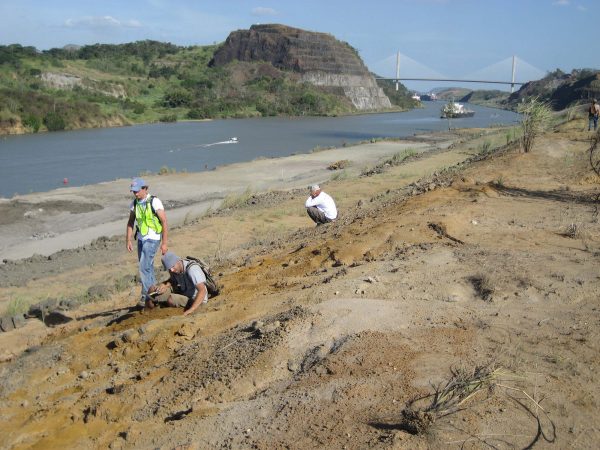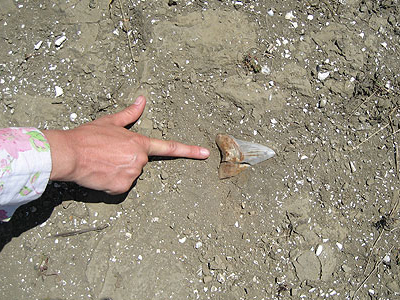
Florida Museum photo by Bruce MacFadden
Florida Museum of Natural History scientists are leading a research and education project in Panama with the help of a $3.8 million National Science Foundation grant.
The five-year Partnership for International Research and Education grant emphasizes teaching students to conduct research and field work with their international colleagues.
“One of the primary goals of the project is to build internationally competent researchers among future U.S. scientists through innovative research and learning experiences,” said Doug Jones, director and curator of invertebrate paleontology at the Florida Museum and principal investigator on the grant.
The international Panama Canal Project will allow researchers and students from Panama, the University of Florida and other U.S. institutions to study the history of climate change and biodiversity in the region.
Recent construction to widen and straighten the channel and build new locks has exposed fossil deposits of marine and land animals which will reveal important clues about Panama’s biodiversity and ancient climate change. Jones said the canal expansion, expected to continue through 2014, provides a once-in-a-lifetime opportunity because of the large amount of sediment being exposed.
The Florida Museum is partnering with the New Mexico Museum of Natural History, among other institutions, on the project.
“This is an obvious place to work,” said Gary Morgan, New Mexico Museum curator of paleontology and a co-investigator on the grant. “This is the place where things were going on. It’s a center of diversity.”
Researchers expect to expand their understanding of the global changes that occurred when the Isthmus of Panama formed, creating a land bridge between North America and South America. Jones said the fossils being uncovered illustrate the evolution of tropical biodiversity as well as the mixing of faunas and floras in Central America as they migrated from North and South America.
“The marine connection between the Atlantic and Pacific was severed simultaneously with the rise of the Panama Isthmus, changing oceanic circulation and ushering in a new climate regime affecting the entire planet,” Jones said.

Florida Museum photo by Bruce MacFadden
The Florida Museum hopes to build long-lasting relationships with its partner institutions that can lead to work on future projects. Other project participants are the Smithsonian Institution Tropical Research Institute, Panama; Florida State University, Panama Canal Campus, Biomuseo, Panama; Universidad De Panama; Sociedad Mastozoologica De Panama; and Autoridad del Canal De Panama.
“It’s a cooperative effort among institutions to learn about the paleontology of Panama and educate people both in Panama and the U.S.,” Morgan said.
Researchers and students also plan to develop a museum exhibit based on the project’s discoveries.
“We envision a 1,000-square-foot, bilingual traveling exhibit tentatively called ‘Panama Canal Discoveries,’ ” Jones said. “It will feature some of the interesting fossil discoveries from the project and provide context to the significance and implications of these fossils.”
When the canal was built a century ago, the Smithsonian Institution examined fossil-rich sediment exposed during construction and created natural history and geological collections documenting modern and ancient biodiversity in Panama.
Learn more about the Panama Canal Project Partnership for International Research and Education (PCP PIRE) at the Florida Museum.